Summary
In this whitepaper, we dive into the many benefits and use cases of advanced graph analytics solutions and how Mosaic Data Science’s collaborative, custom approach applies well to deploying this technique to solve advanced large-scale data challenges.

Take Our Content to Go
Advanced Graph Analytics Primer
Mosaic is no stranger to thinking creatively to solve data analytics problems. The days of relying strictly on relational databases and working under the limitations they provide are over. As more and more digital exhaust is captured, processed, and analyzed, information becomes interconnected, and the systems become increasingly sophisticated. Graph technologies and advanced graph analytics solutions can help organizations understand the relationships between customers, systems, or other business entities.
Complex business problems require exploring and understanding the variable nature of connections and strengths across multiple entities such as organizations, people, or transactions. At a high level, this mathematical formalism representing a network can be described as studying relationships.
Given a set of nodes & connections, which can abstract anything from transportation networks, connections between customers, knowledge graphs, or molecular structures to computer data, graph analytics provide a helpful tool to quantify & simplify the many moving parts of dynamic systems. Studying graphs through the frameworks of the distance between points, connectedness, the centrality of individual nodes, the larger structure of multiple nodes, etc., provides insights into many network questions.
Data science teams need to generate insights efficiently & effectively. Graph analytics fuses network science, statistics, visualization, machine learning, and operations research/optimization to deliver actionable information on complex relationships.
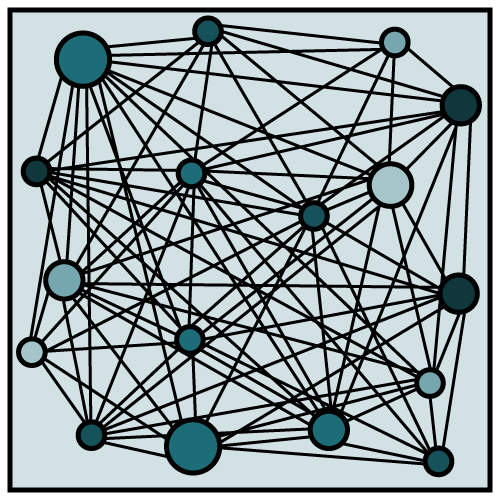
Interested in learning more about the principles behind Graph Theory & Network Science? Read our detailed primer blog here.
Why does this matter?
Graph technologies will continue to grow in popularity among organizations because they connect data points into contextual information, depending on the entity of interest. Graphs are also useful for the detection and analysis of complex patterns of relationships among entities. Graph technologies come in different guises, representing implementations of graph analytics, but in different ways:
- Gartner* estimates 80% of data and analytics innovations will use graph technologies by 2025
- Graph database management systems (GDBMS), are increasingly becoming more user-friendly and have modeling capabilities that can represent an organization’s domains and relationships.
- Knowledge graphs represent contextual, highly connected data that is organized in the form of graphs. They are used to contextualize search and to turn data into knowledge.
- Layering custom ML into Graph Tech allows organizations to solve unique problems and gain a competitive advantage. Custom ML requires knowledgeable data scientists that can apply the math to get interpretable/actionable insights and predictions.
- Graph neural-network architectures require the careful hand of an experienced data scientist, as the mechanics behind turning graph data into insights is far more complex than using a pre-trained model.

Because of the greater accessibility of graph-based tools and cloud computing, finding relationships in data using advanced graph analytics solutions and techniques is now possible at scale. Advances in computing capacity to power large-scale models have allowed for complex graphs to be developed to represent relationships between almost anything. Graph analytics can be a powerful tool in the data science toolkit when designed & deployed properly.
In this whitepaper, we dive into the many benefits and use cases of graph analytics and how Mosaic Data Science’s collaborative, custom approach applies well to deploying this tool to solve advanced large-scale data challenges.
Adoption and Benefits
Gartner states that by 2025, graph technologies will be used in 80% of data and analytics innovations, up from 10% in 2021, facilitating rapid decision-making across the enterprise. This is largely due to the ability of graphs to maximize the value of large volumes of data through deep and fast mining, achieving real-time deep data correlations with other types of NoSQL or relational databases.
In addition, studies predict that graph analytics’ adoption rate by worldwide enterprises will grow 50-to-100 times in the next 8-to-10 years. Mosaic Data Science is at the forefront of this innovation, applying advanced graph analytics solutions to benefit and optimize problem-solving.
We find similar adoption barriers with advanced graph analytics solutions as we do with other flavors of machine learning & artificial intelligence:

- Adoption Barrier #1: Skills shortage
- Adoption Barrier #2: Fear of the unknown
- Adoption Barrier #3: Find a starting point; start with the end in mind
Mosaic outlines an approach to breaking down these barriers here.
Given the suitability of graphs to support the automation and scale required by AI & digital transformation, it’s logical to conclude that more organizations will integrate graph-supported capabilities over time. Gartner & Mosaic recommend that data and analytics leaders keep a close watch on this market and find ways to exploit proofs of concept (POCs) where possible.
Mosaic doesn’t believe in storing data for the sake of collecting everything. Often there are immense costs associated with large-scale storage and processing. As with any other flavor of data science, Mosaic works in, we believe starting with the end in mind is absolutely critical to making these innovative techniques & solutions work as intended. So how can organizations find pilot candidates to test these powerful techniques on?
Use Cases and Solutions
The applications and use cases of graph analytics are endless and continue to evolve alongside the technology. Mosaic has the expertise to fuse the power of machine learning, deep learning, and optimization into graph neural analytics to help our customers throughout different industries gain a competitive edge, optimize operations, and gain a deeper understanding of their connected data. Below, we outline a few concrete examples that showcase the power of advanced graph analytics solutions. Ultimately Mosaic’s ability to integrate this powerful technique into our toolbox facilitates a more robust problem-solving framework.
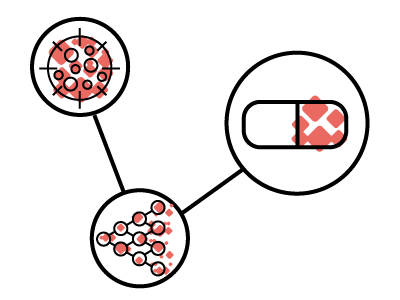
Biology/MedTech: Expedited Drug Discovery & Precision Medicine
Advanced graph analytics solutions can analyze various medical knowledge data about medicines, treatments, results, and patients and perform “hypothesis generation” to determine promising treatments for particular diseases. Graph technology can fortify precision medicine applications by fusing information from knowledge graphs and other data sources to anticipate problems and complications from other medications the patient is taking to predict undesirable symptoms.
Life science organizations can deploy advanced graph analytics in the drug discovery process, using data to build models that inform product development and quality management, producing safer and more effective products. Patients who manage both long & short-term diseases can receive optimal treatment plans as professionals can unlock insights.
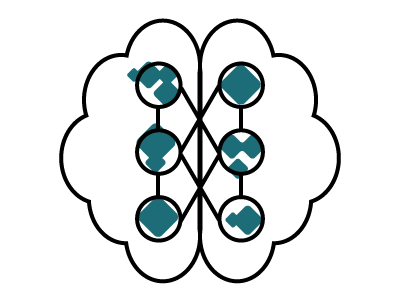
NLP & Linguistics: Graph Neural Networks
Graph neural networks (GNN) have had broad applications in the natural language processing space to improve traditional approaches. By capturing the semantic, syntactic, temporal, and relational structure between words, graphs have always formed an essential part of NLP applications ranging from syntax-based machine translation, knowledge graph-based question answering, abstract meaning representation for common sense reasoning tasks, and so on. Such linguistics applications can be modeled to help organizations derive insights into customer churn and sentiment.
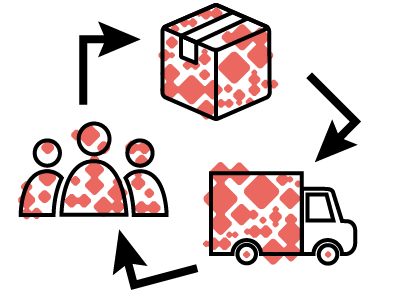
Supply Chain: Routing, Supplier Risk & Inventory
Graph analytics can combine complex graphs representing intermodal transportation with tailored graph algorithms and additional data sources to construct robust routing and supply chain design.
In another use case scenario for logistics, graph analytics can help with improving visibility into multiple tiers of a supplier network, which will allow CPOs to proactively manage supplier risk, thereby increasing their organizations’ operational resilience. Graph technology can model the connections between suppliers at multiple tiers. By using data elements such as industry and materials, an exploration of potential relationships between buying organizations and suppliers can be formed.
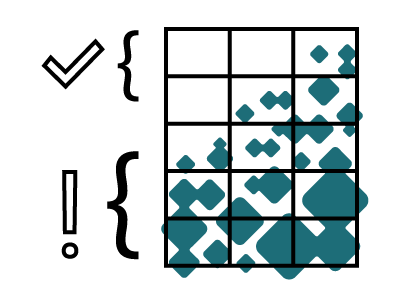
Risk Management: Network Optimization & Simulation in the face of Uncertainty
It is critical for an enterprise to identify the obstacles that could compromise its ability to deliver and ensure the appropriate responses are in place. An enterprise is a complex system comprised of several networks. Mosaic has dedicated an entire whitepaper to this problem.

Marketing/Customer Analytics: Churn & Segmentation
Mosaic has utilized unsupervised learning techniques to solve several segmentation problems. Mosaic is a proponent of integrating behavioral information with traditional demographics & interests to build insightful clusters that drive downstream marketing decisions. Advanced graph analytics solutions built on graph technology can help you uncover hidden relationships between these clusters to fortify marketing decisions.
Mapping the customer journey gets complex quickly. Trying to identify which steps along that journey lead to churn is even harder. Mosaic has deep expertise in leveraging the full spectrum of data science to build robust churn prediction systems. Advanced graph analytics solutions can uncover hidden relationships between products and customers. Leveraging these insights, organizations can map out complex journeys on a graph and layer custom ML algorithms to detect customer pain points and recommends the best course of action to retain customers & revenue.
Conclusion
Graph technology is one of many new database management choices targeted at analytical, operational, data science and AI use cases. Tailored graph algorithms are a key component of modern data and analytics capabilities because they span all domains and industries. Mosaic Data Science, a leader in the development of custom ML solutions, is an early adopter of this technology, helping our customers derive value by answering increasingly complex questions. Our skilled data scientists keep graph techniques in their toolbox to forecast behavior and prescribe action for dynamic networks.
Graph techniques encourage people to notice patterns in data — commonalities or discrepancies — that might otherwise remain hidden and undetected as an artifact of how data is captured and represented in tables. Complex situations — usually those dealing with people, causes, and effects — typically involve complex relationships and difficult-to-ascertain patterns. The ability to detect these patterns is crucial for generating insight.
Purchasing graph technology is not enough to drive solutions; as with most data science applications, a knowledgeable data scientist who can translate math to business language is required to tune the tools to drive value.
Ready to get started on implementing this cutting-edge technology into your operations? Get in touch with Mosaic to learn how we can help you get started.
*Top 10 Trends in Data and Analytics, 2021, Gartner, Inc


